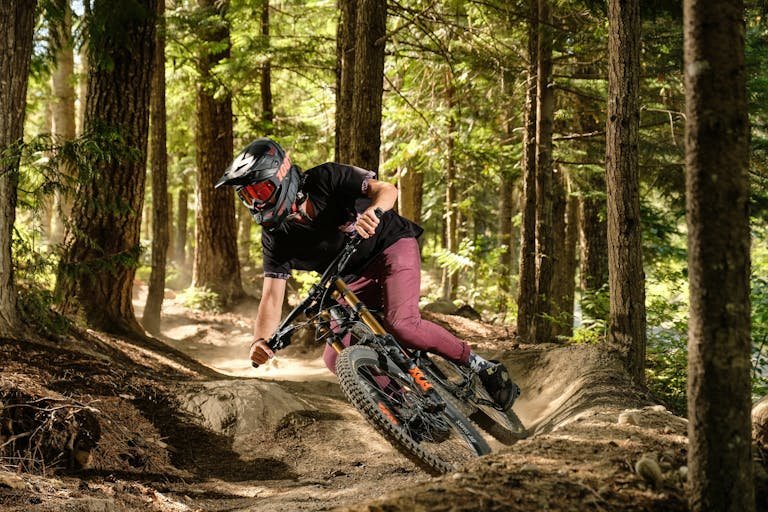Bicycle Transportation 101: A Comprehensive Guide to Safely Transport Your Bicycle
The Ultimate Guide to Car Racks, Trains, and Air Travel
Bicycle transportation choices have gotten a lot better lately. Knowing how to transport your beloved bike safely is crucial. Did you know that improper bicycle transportation can lead to costly damages or even complete bicycle destruction? In this comprehensive guide, we’ll walk you through everything you need to know about moving your two-wheeled companion across various modes of transportation.
Transporting Your Bicycle by Car: Rack Options and Safety Tips
Understanding Bike Rack Types: More Than Just Metal and Straps
Choosing the right bike rack is like picking the perfect pair of shoes – it’s deeply personal and depends on multiple factors. Let’s break down the main contenders:
Roof Racks: The High-Altitude Solution
$150-$500
Pros
- Keeps your car’s rear accessible
- Works with virtually any vehicle
- Aerodynamic design
- Protects bike from rear-end collisions
Cons
- Requires lifting bike overhead (challenging for heavier bikes)
- Increased vehicle height
- Higher fuel consumption
- Risk of forgetting bike is up there is high
Trunk Racks: The Budget-Friendly Option
$50-$200
Pros
- Most affordable solution
- Easy to install and remove
- Lightweight
- Perfect for occasional cyclists
Cons
- Limited bike capacity (usually 2-3 bikes)
- Can damage car’s paint
- Less secure than other options
- Reduced visibility while driving
Hitch Racks: The Heavy-Duty Champion
$200-$800
Pros
- Incredibly stable
- High weight capacity
- Easy to load
- Minimal bike movement during transport
- Works great for multiple bikes
Cons
- Requires vehicle with hitch receiver
- More expensive
- Can be heavy
- Reduces ground clearance
Safety First: Installation Techniques
Critical Installation Checklist:
- Double-check rack attachment points
- Ensure bike is level and secure
- Test rack stability before driving
- Use additional safety straps
- Check bike-to-rack weight compatibility
Weight and Compatibility Considerations
Not all bikes play nice with all racks. Consider these factors:
- Carbon fiber frames need extra padding
- Mountain bikes might require specialized attachments
- Electric bikes are significantly heavier
- Frame geometry impacts rack compatibility
Preventing Bike Damage
Common Transport Mistakes to Avoid:
- Never let bikes touch each other
- Use frame protectors
- Remove delicate accessories
- Check tire pressure before transport
- Secure loose components
Legal and Road Safety Guidelines
Must-Know Transport Regulations:
- Ensure rack doesn’t obscure license plate
- Use additional warning flags for extended loads
- Follow state-specific transportation laws
- Check rack lighting requirements
- Maintain safe driving speeds
The Pre-Trip Bike Check
Before hitting the road, always:
- Tighten all rack connections
- Verify bike attachment points
- Test rack stability
- Check tire straps
- Remove water bottles and accessories
The Pre-Trip Bike Check
Before hitting the road, always:
- Tighten all rack connections
- Verify bike attachment points
- Test rack stability
- Check tire straps
- Remove water bottles and accessories
The Financial Angle: Rack Investment
Budget Breakdown:
- Trunk Racks: $50-$200
- Roof Racks: $150-$500
- Hitch Racks: $200-$800
Invest in quality. Cheap racks can cost you a bike.
Your Bike, Your Journey
Transporting a bicycle isn’t rocket science, but it does require attention to detail. Every rack has its quirks, and every bike its challenges. The key is finding what works for your specific setup.
Remember, a few minutes of careful preparation can save you hundreds in potential damage. Your bike is more than equipment – it’s your ticket to adventure.
Navigating Public Transportation with Your Bicycle
The Urban Cyclist’s Mobility Manifesto
Combining bicycles with public transportation isn’t just a convenience – it’s a game-changing mobility strategy. I’ve learned this through countless trips, missed trains, and moments of transit triumph that transformed my urban commuting experience.
Train Travel Bicycle Rules: A Complex Landscape
Public transit systems treat bicycles like complicated guests. They are welcome, but with strict house rules. Understanding these rules is crucial for smooth travel.
Typical Train Bicycle Policies
- Peak Hour Restrictions
- Most systems limit bicycle access during rush hours
- Typically 7-9 AM and 4-6 PM on weekdays
- Strict enforcement in major metropolitan areas
- Exceptions for folding bikes
- Storage Location Guidelines
- Designated bicycle areas in most trains
- Some systems require specific car placement
- Limited capacity (usually 2-4 bikes per train)
- Priority given to folding bikes
Folding Bikes: The Transit Traveler’s Secret Weapon
Advantages of Folding Bicycle Technology
- Bypass most transportation restrictions
- Compact storage (typically under 20×30 inches when folded)
- Lightweight designs (10-25 pounds)
- Instant convertibility
- Circumvent most storage fees

Top Folding Bike Considerations
- Fold speed
- Weight
- Durability
- Compact design
- Ease of carrying
Bicycle Storage and Securing Techniques
Essential Transportation Strategies
- Minimalist Packing
- Remove accessories
- Secure loose components
- Compact configuration
- Use protective covers
- Securing Methods
- Velcro straps
- Bungee cords
- Compact carrying bags
- Wheel locks
Peak and Off-Peak Transportation Guidelines
Transit System Navigation
- Off-Peak Advantages
- More flexible bicycle policies
- Less crowded spaces
- Reduced restrictions
- Lower stress transportation
- Peak Hour Challenges
- Limited bicycle spaces
- Potential additional fees
- Strict enforcement
- Higher likelihood of rejection
Regional Policy Variations
Bicycle Transportation Landscape
- North American Policies
- Typically more restrictive
- Specific bicycle car designations
- Advance booking often required
- Seasonal variations
- European Union Approaches
- More bicycle-friendly policies
- Integrated bicycle transportation
- Lower fees
- Multiple storage options
- Asian Metropolitan Systems
- Technology-driven solutions
- Advanced bicycle storage
- Strict but comprehensive policies
- High-tech securing mechanisms
Fees and Potential Restrictions
Financial Considerations
- Most systems charge additional fees
- Folding bikes often free
- Standard bicycles: $2-$10 per trip
- Monthly bicycle pass options
Special Equipment for Easy Transportation
Recommended Gear
- Compact Carrying Solutions
- Bicycle bags
- Lightweight covers
- Folding mechanisms
- Shoulder straps
- Essential Accessories
- Quick-release pedals
- Compact locks
- Minimalist repair kit
- Lightweight frame protection
Tips for a Smooth Transit
- Always check specific system rules
- Have backup transportation plan
- Arrive early
- Be courteous to other passengers
- Understand local regulations
Technological Innovations
Emerging Trends:
- Smart bicycle storage systems
- Digital reservation platforms
- AI-powered bicycle space tracking
- Integrated mobility applications
Mobility Reimagined
Public transportation with a bicycle isn’t just transportation – it’s a lifestyle. It’s about flexibility, sustainability, and reimagining urban mobility.
Your bicycle is more than a vehicle. It’s your passport to a more connected, efficient world.
Flying with Your Bicycle: Airline Packing and Shipping Strategies
The Globetrotter’s Bicycle Travel Guide
Flying with a bicycle is like navigating a complex obstacle course of regulations, fees, and potential disasters. I’ve learned more about airline policies through my mistakes than any guidebook could teach me. Let me save you from the headaches I’ve experienced.
Bicycle Dismantling: The Art of Deconstruction
Essential Dismantling Checklist
- Tools You’ll Need
- Hex key set
- Pedal wrench
- Torque wrench
- Zip ties
- Packing tape
- Bubble wrap
- Soft cloth or padding materials
- Critical Disassembly Steps
- Remove pedals
- Detach seat and seatpost
- Turn handlebars sideways
- Remove rear derailleur
- Deflate tires slightly
- Protect delicate components

Packing Material Masterclass
Protective Packaging Techniques
- High-density foam padding
- Bubble wrap (multiple layers)
- Cardboard frame protectors
- Specialized bicycle foam tubes
- Soft cloth for sensitive areas
- Anti-static wrap for electronic components
Bike Bag vs. Hard Case: The Great Debate
Pros and Cons Breakdown
- Soft Bike Bags
- Lightweight
- More flexible
- Easier to store
- Lower cost
- Less protection
- Requires more careful packing
- Hard Cases
- Maximum protection
- Rigid structure
- Built-in padding
- Better for expensive bikes
- Heavier
- More expensive
- Bulkier storage
Airline Bicycle Transportation Policies
Policy Navigation Strategies
- Check specific airline regulations
- Measure bike dimensions precisely
- Understand weight restrictions
- Verify additional handling fees
- Research international variations
Typical Airline Requirements
- Maximum weight: 50-70 pounds
- Dimension limits: 62-80 linear inches
- Additional fees: $50-$250
- Some airlines count as standard luggage
- Special sporting equipment classifications
Handling Fees and Weight Restrictions
Financial Preparation
- Budget for additional fees
- Understand weight pricing tiers
- Consider pre-paying bicycle transportation
- Compare airline policies
- Look for cycling-friendly carriers
Insurance Considerations
Protecting Your Bicycle Investment
- Specialized bicycle travel insurance
- Credit card protection benefits
- Airline liability limitations
- Replacement value coverage
- Documenting bicycle condition before travel
Step-by-Step Packing Guide
Comprehensive Packing Protocol
- Clean bicycle thoroughly
- Completely dry all components
- Disassemble strategically
- Wrap delicate parts individually
- Use foam tubing on frame
- Secure loose components
- Add protective padding
- Double-check airline requirements
Reassembly Tips and Techniques
Post-Flight Bicycle Revival
- Inspect for any transportation damage
- Have basic repair tools available
- Check alignment and tension
- Lubricate moving parts
- Perform quick safety inspection
Critical Insights:
- Photograph bike before packing
- Keep original packaging
- Understand international shipping regulations
- Budget for potential repairs
- Carry essential spare parts
Technological Innovations

Emerging Travel Solutions:
- GPS tracking for bicycle cases
- Smart bicycle bags with impact sensors
- Lightweight composite packing materials
- Advanced shock-absorption technologies
Your Bicycle, Your Adventure
Flying with a bicycle is a commitment to mobility, adventure, and pushing your cycling boundaries.
Remember, preparation is your best travel companion. Treat your bike like the precision instrument it is.
Essential Gear for Bicycle Transportation
The Ultimate Bicycle Protection Arsenal
Transporting a bicycle isn’t just about moving it from point A to point B – it’s about protecting your most prized possession. I’ve learned through mishaps, and near-disasters that the right gear can mean the difference between a pristine bike and an expensive repair nightmare.
Protective Covers and Padding: Your Bike’s First Line of Defense
- Soft-sided bags for versatile transport
- Hard-shell cases for maximum protection
- Padded interior compartments
- Specialized frame protection
- Weather-resistant materials
- Airline-approved dimensions
- Foam-lined interiors
- Reinforced corners
- Lockable design
- Wheeled for easy transportation
Secure Strapping Systems: Keeping Your Bike Immobilized
Critical Strapping Techniques
- Transportation Strapping
- Padded wheel straps
- Frame retention systems
- Adjustable tension mechanisms
- Vibration-dampening designs
- Quick-release capabilities
- Bike Rack Specific Straps
- Rubber-coated metal hooks
- Anti-slip designs
- Weather-resistant materials
- Multiple attachment points
- Load-distribution technology
Bicycle Transportation Locks: Security on the Move
Locking Solution Categories
- Portable Lock Options
- Compact cable locks
- Folding locks
- U-locks with transportation brackets
- Lightweight titanium designs
- Combination and key variants
- Advanced Security Features
- GPS-enabled tracking
- Bluetooth connectivity
- Tamper alerts
- Lightweight materials
- Weatherproof construction
Shock-Absorbing Equipment: Protecting Against the Unexpected
Maintenance Tools for On-the-Go Repairs
Essential Repair Kit Components
- Compact Tool Collection
- Multi-tool with multiple hex sizes
- Portable mini-pump
- Tire levers
- Patch kit
- Lightweight chain tool
- Compact lubricant
- Emergency Repair Capabilities
- Quick-link chain repair
- Spare derailleur hanger
- Emergency spoke replacement kit
- Compact CO2 inflation system
- Micro-fiber repair cloth
Tracking and Security Devices
Advanced Monitoring Solutions
- GPS tracking tags
- Bluetooth location devices
- Cellular-enabled tracking
- Motion-sensor alerts
- Cloud-connected security systems
Tips for Gear Selection
Critical Considerations:
- Match the gear to the transportation method
- Consider the climate and terrain
- Invest in quality over price
- Test equipment before critical trips
- Understand specific transportation requirements
Technological Innovations
Emerging Transportation Technologies:
- Smart bike bags with integrated sensors
- AI-powered protection systems
- Modular transportation design
- Environmentally sustainable protection materials
Transportation gear is more than accessories – it’s a comprehensive protection strategy. Your bicycle represents freedom, adventure, and potentially a significant financial investment.
Choose your gear wisely. Protect your ride like the precision instrument it is.
Final Thoughts
Transporting your bicycle doesn’t have to be a stressful experience! By understanding the right techniques, investing in proper equipment, and planning ahead, you can ensure your bike arrives safely at its destination. Remember, a little preparation goes a long way in protecting your two-wheeled investment.
Find More Resources on Bicycles
- Smart Bike Trainers: 2024 Best Picks with Features and Benefits
- How to Improve Cycling Endurance in 2025: 5 Proven Strategies for Cyclists
- Bicycle Chain Maintenance: 2025 How to Clean and Lube Guide
- How Do You Adjust Bike Brakes? A Step-by-Step Guide for 2024
- Essential Mountain Bike Gear: A Complete Guide for 2024







